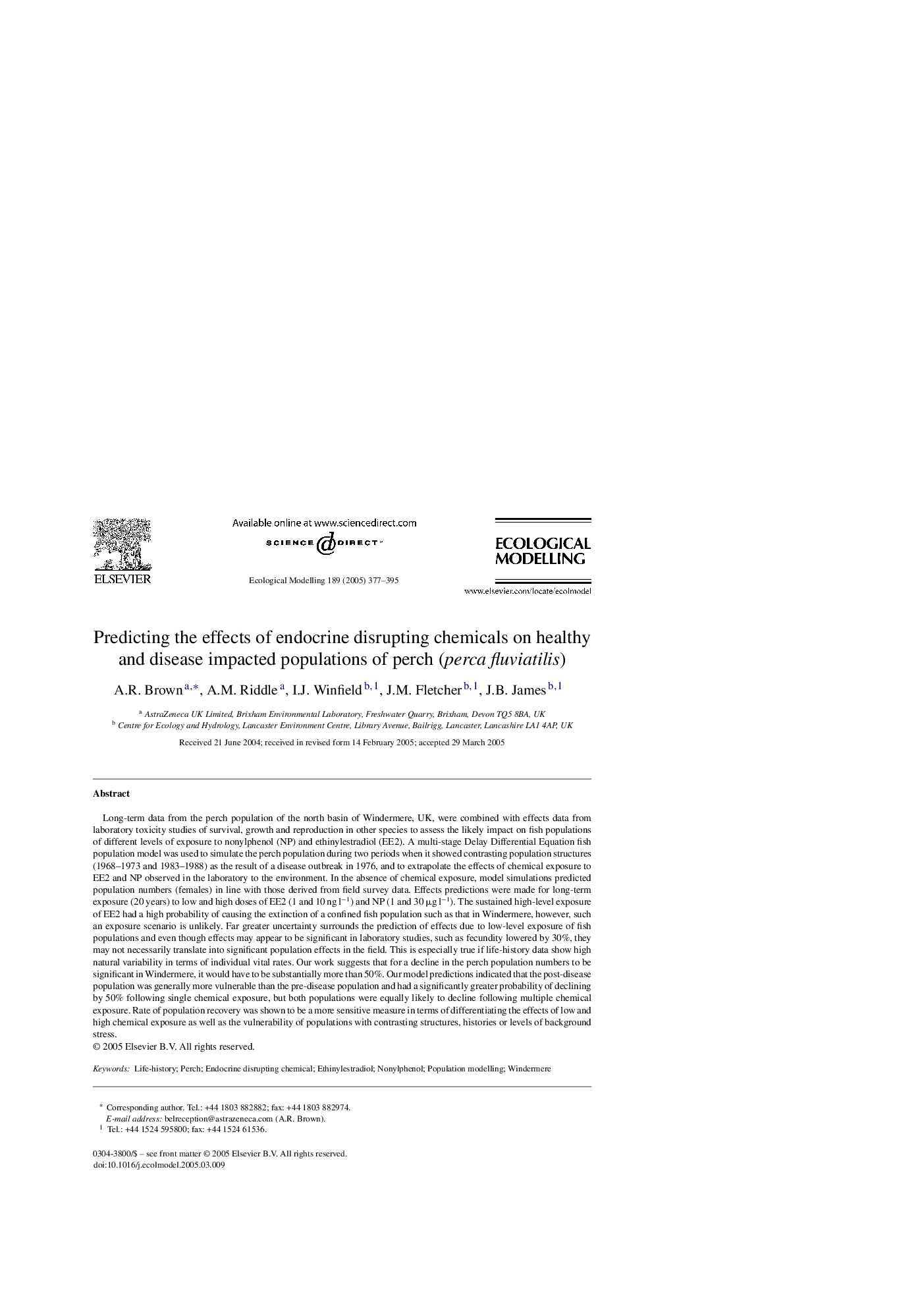| کد مقاله | کد نشریه | سال انتشار | مقاله انگلیسی | نسخه تمام متن |
|---|---|---|---|---|
| 9443418 | 1617573 | 2005 | 19 صفحه PDF | دانلود رایگان |
عنوان انگلیسی مقاله ISI
Predicting the effects of endocrine disrupting chemicals on healthy and disease impacted populations of perch (perca fluviatilis)
دانلود مقاله + سفارش ترجمه
دانلود مقاله ISI انگلیسی
رایگان برای ایرانیان
کلمات کلیدی
موضوعات مرتبط
علوم زیستی و بیوفناوری
علوم کشاورزی و بیولوژیک
بوم شناسی، تکامل، رفتار و سامانه شناسی
پیش نمایش صفحه اول مقاله

چکیده انگلیسی
Long-term data from the perch population of the north basin of Windermere, UK, were combined with effects data from laboratory toxicity studies of survival, growth and reproduction in other species to assess the likely impact on fish populations of different levels of exposure to nonylphenol (NP) and ethinylestradiol (EE2). A multi-stage Delay Differential Equation fish population model was used to simulate the perch population during two periods when it showed contrasting population structures (1968-1973 and 1983-1988) as the result of a disease outbreak in 1976, and to extrapolate the effects of chemical exposure to EE2 and NP observed in the laboratory to the environment. In the absence of chemical exposure, model simulations predicted population numbers (females) in line with those derived from field survey data. Effects predictions were made for long-term exposure (20 years) to low and high doses of EE2 (1 and 10 ng lâ1) and NP (1 and 30 μg lâ1). The sustained high-level exposure of EE2 had a high probability of causing the extinction of a confined fish population such as that in Windermere, however, such an exposure scenario is unlikely. Far greater uncertainty surrounds the prediction of effects due to low-level exposure of fish populations and even though effects may appear to be significant in laboratory studies, such as fecundity lowered by 30%, they may not necessarily translate into significant population effects in the field. This is especially true if life-history data show high natural variability in terms of individual vital rates. Our work suggests that for a decline in the perch population numbers to be significant in Windermere, it would have to be substantially more than 50%. Our model predictions indicated that the post-disease population was generally more vulnerable than the pre-disease population and had a significantly greater probability of declining by 50% following single chemical exposure, but both populations were equally likely to decline following multiple chemical exposure. Rate of population recovery was shown to be a more sensitive measure in terms of differentiating the effects of low and high chemical exposure as well as the vulnerability of populations with contrasting structures, histories or levels of background stress.
ناشر
Database: Elsevier - ScienceDirect (ساینس دایرکت)
Journal: Ecological Modelling - Volume 189, Issues 3â4, 10 December 2005, Pages 377-395
Journal: Ecological Modelling - Volume 189, Issues 3â4, 10 December 2005, Pages 377-395
نویسندگان
A.R. Brown, A.M. Riddle, I.J. Winfield, J.M. Fletcher, J.B. James,